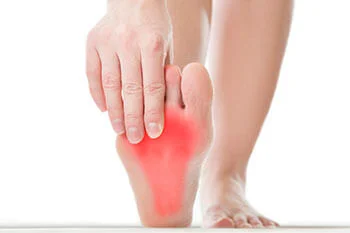Table of Contents
Introduction
Ankle impingement is a painful mechanical irritation, in the form of painful pinching of tissue, that causes pain during activities and often reproducible with extremes of ankle range of motion.
Soft-tissue ankle impingements can occur as a result of twisting injuries to the ankle, persistent inflammation, or joint disease states. Ankle impingements also can be congenital in nature. Post traumatic injuries such as an ankle sprain or fracture is the leading cause of impingement lesions.
The most common location for ankle impingements is the front of the ankle toward the outside. However, soft tissue impingements can occur at any location in the ankle including the back of the ankle (posterior ankle). The symptoms may be silent with walking and only are expressed with more strenuous activities. There can be pain during and after activities and there can be occasional catching feeling in the ankle.
Common Impingements
- Synovial Thickening – Perhaps the most common impingement. The synovium of a joint is like the lining of your cheek and can thicken when inflamed and it has the appearance of finder like projections like a sea anemone.
- Meniscoid Lesion – Interposed tissue between the joint surfaces.
- Fibrous Bands – String-like bands of tissue connecting to various structures in the ankle. Normal tissues will naturally become inflamed with activity from these bands.
- Bassett Lesion – Is a focal thickening of a lateral ligament that is naturally seen in the ankle. With injury and thicking of the ligament the ligament begins to become a source of rubbing and catching of the outer aspect of the ankle bone (talus). This ligament is known as the distal fascicle of the anterior tibiofibular ligament.
Associated Findings
- Dull ache at end of day.
- Persistent pain after ankle sprain weeks after injury. (Up to 40% of ankle sprains have persistent symptoms that linger).
- Pain always much worse after more demanding activities.
- Pain with ankle dorsiflexion. (ie pain when performing an ankle lunge or when performing a deep squat).
- Perceived feeling of blocked movement of the ankle.
- Pain with finger pressure over ankle when bending the ankle. impingement.
- Localized swelling over the ankle.
- Poor balance on one foot.
- Pain when ascending or descending stairs.
- Pain when jumping.
- Pain with pivoting.
- Pain with heavy lifting
Diagnosis
Treatment Options
- Self Directed Measures – Ice, compression, supportive shoes, heel lifts.
- Anti-inflammatory Drugs – Always a good initial treatment if the medication is tolerated.
- Injection Therapy – steroid injection into the affected area may give relief. In cases where the impingement is simple inflammation the steroid can be curative. If symptoms return within a short time frame then a more serious impingement is likely.
- Bracing – Helpful if residual instability of the ankle is present.
- Physical Therapy is an option if deconditioning or balance deficit is present.
- Ankle Arthroscopy – With the failure of conservative modalities, Arthroscopic debridement is the treatment of choice.


